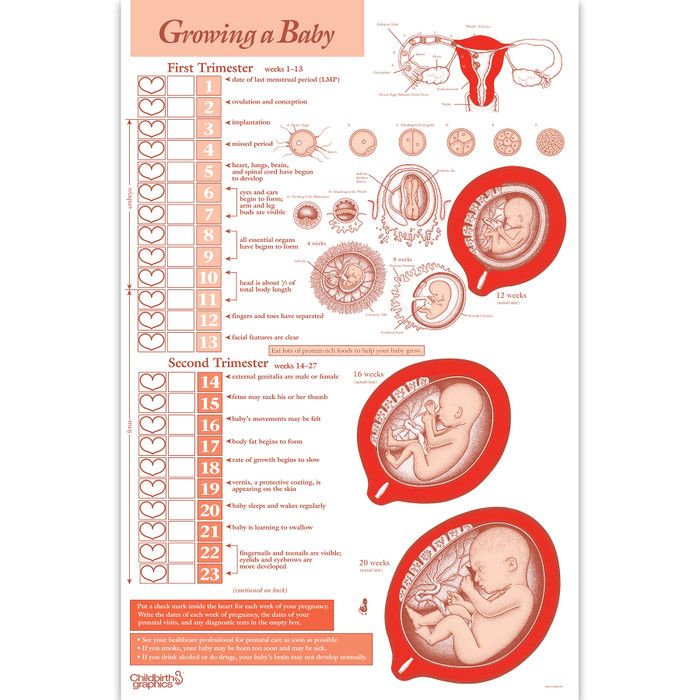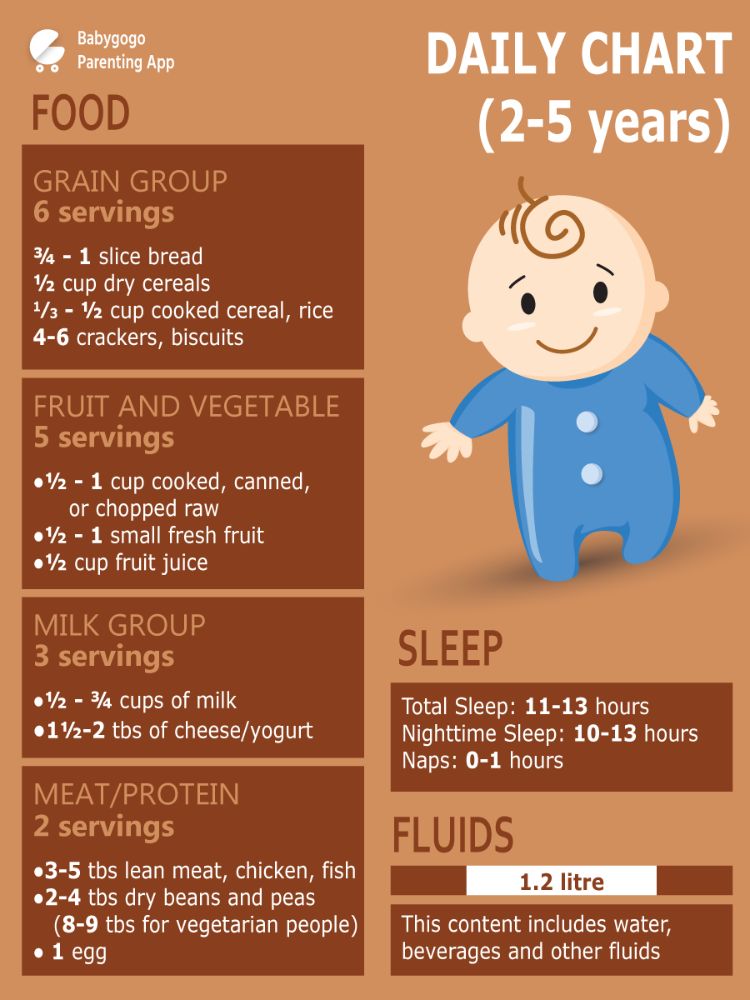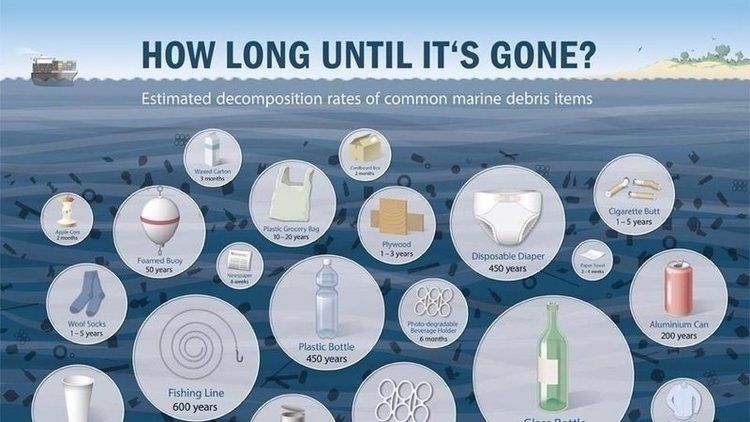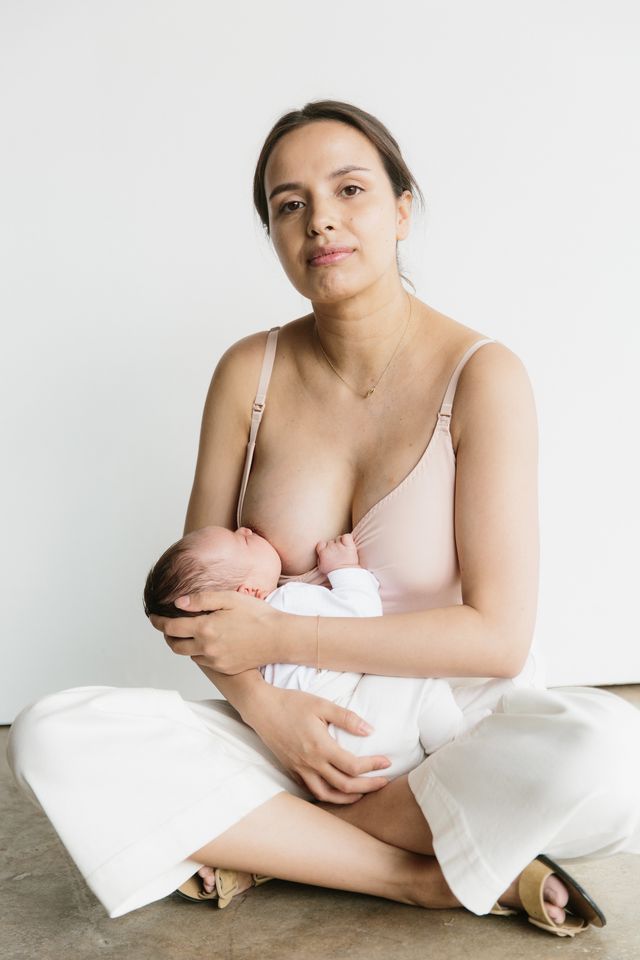Find due date
Calculate your due date: How to find your baby's due date
Choose a calculation method Last periodConception dateI know my due date
First day of my last period
BabyCenter's Due Date Calculator
Use our pregnancy due date calculator by plugging in either the date of your last menstrual cycle or the date you know you conceived. The calculator will do the rest.
How is my due date calculated?
There are several ways your due date is determined. If you happen to know the day you conceived, you can count 38 weeks from that day to find your due date. (Human gestation takes about 38 weeks.)
But very few expectant moms know exactly when they conceived. Even if you only had sex once during your fertile period, you wouldn't conceive on that day unless you happen to be ovulating. Sperm can live for up to five days inside your fallopian tubes. So, it could be up to five days after you have sex that you release an egg (ovulate) and it gets fertilized by a waiting sperm. That's the day you conceive.
So, without knowing the day of conception, how does anyone determine a due date?
First day of your last period
The most common way to calculate your pregnancy due date is by counting 40 weeks from the first day of your last menstrual period (LMP). And that's how most healthcare providers do it.
If your menstrual cycle length is the average length (28-day cycle), your menstrual cycle probably started about two weeks before you conceived. This explains why pregnancies are said to last 40 weeks instead of 38 weeks.
This method doesn't take into account how long your menstrual cycle actually is or when you think you might have conceived. But generally speaking, women typically ovulate about two weeks after their menstrual cycle starts. And women are more likely to know when their last period started than the day they ovulated.
Conception date
If you do happen to know precisely when you conceived – say, if you were using an ovulation predictor kit or tracking your ovulation symptoms – you can calculate your pregnancy due date based on your conception date.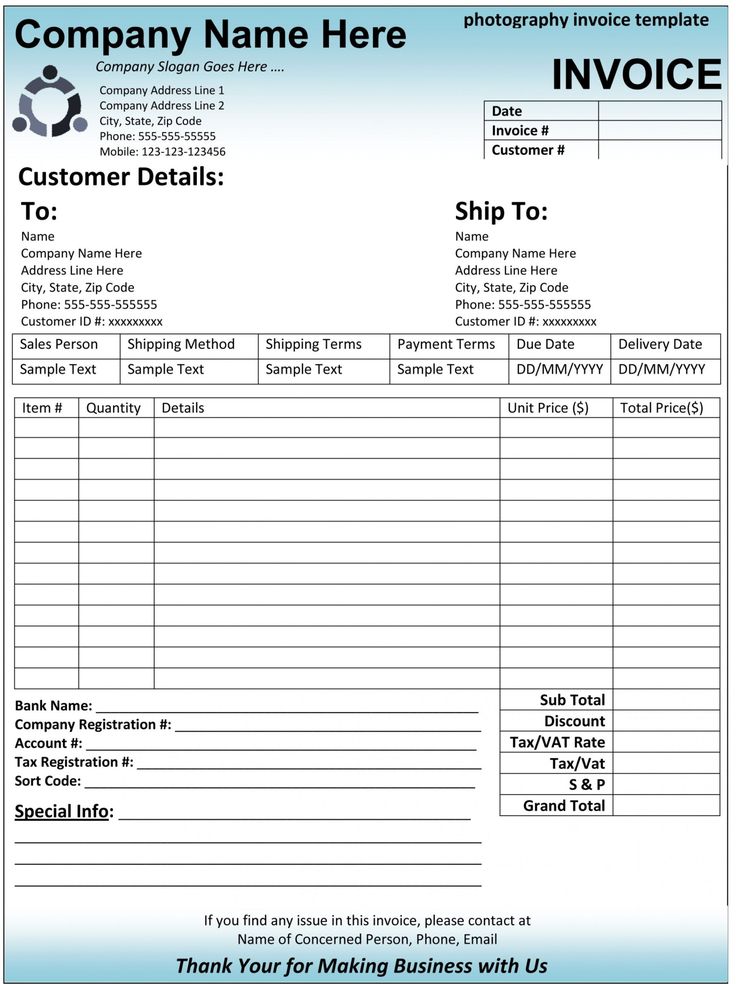 Just choose that calculation method from the pulldown above and put in your date.
Just choose that calculation method from the pulldown above and put in your date.
Note: Again, you don't necessarily conceive on the day you have sex.
IVF transfer date
If you conceived through IVF, you can calculate your due date using your IVF transfer date. If you had a Day 5 embryo transfer, count 261 days from your transfer date. If you had a Day 3 embryo transfer, count 263 days.
Can my due date change?
Your healthcare provider might revise your due date if your baby is measured during a first trimester ultrasound scan and found to be much bigger or smaller than expected for gestational age. This is more likely to happen if you have an irregular menstrual cycle length that makes it hard to pinpoint the date of conception.
Your healthcare provider will measure your baby during that ultrasound exam to figure out how far along your baby is and then provide you with a new due date.
What if I already know my due date?
If you already know your due date, you can use this calculator to see your pregnancy timeline. It will tell you when you'll hit various milestones, and when you may be due for prenatal tests and prenatal visits. You'll also find what your baby's sign and birthstone will probably be and which famous people were born on your due date.
It will tell you when you'll hit various milestones, and when you may be due for prenatal tests and prenatal visits. You'll also find what your baby's sign and birthstone will probably be and which famous people were born on your due date.
How likely am I to give birth on my due date?
Of course, a due date calculation is always approximate, whether it's from our tool or from your doctor or midwife. Only 1 in 20 women delivers on their due date. You're just as likely to go into labor any day during the two weeks before or after.
Want more information about how the weeks, months, and trimesters of pregnancy are counted? See our pregnancy timing chart.
How soon can I take a pregnancy test?
With all this talk about pregnancy due dates, you may be wondering when you can take a pregnancy test. To ensure you get the most accurate reading, it's best to wait a few days after your missed period to take a pregnancy test.
At-home urine tests measure the amount of hCG (human Chorionic Gonadotropin) present in your body. If you take a pregnancy test before you miss your period, you may not get an accurate result, despite what some tests advertise.
If you take a pregnancy test before you miss your period, you may not get an accurate result, despite what some tests advertise.
If you're getting a blood test in your provider's office, you may get results sooner. These tests also measure the amount of hCG in your bloodstream, but they're more sensitive than at-home urine tests. Blood tests may be able to detect pregnancy six to eight days after ovulation.
Read more
- Your pregnancy, week by week
- Your first trimester pregnancy checklist
- Pregnancy Weight Gain Calculator
- Ovulation Calculator
- See all tools
Chinese gender predictor chart and calendar tool
Wondering whether you're having a boy or girl? Our Chinese Gender Predictor calculator forecasts your baby's sex based on an ancient Chinese gender chart and the Chinese lunar calendar.
There's no scientific evidence that the Chinese Gender Predictor works. But since there are only two choices – boy or girl – it has at least a 50-50 chance of making an accurate prediction!
What is the Chinese gender predictor chart?
Legend has it the chart is more than 700 years old and was discovered in a royal tomb near Beijing. The technique involves converting the mother's age and the month of conception to dates on the Chinese lunar calendar, then cross-checking that data on a chart that predicts the baby's sex.
The technique involves converting the mother's age and the month of conception to dates on the Chinese lunar calendar, then cross-checking that data on a chart that predicts the baby's sex.
How accurate is the Chinese gender predictor chart?
Researchers at the University of Michigan School of Public Health did a study to test the Chinese lunar calendar method of predicting a baby's sex. They reviewed the records of 2.8 million Swedish births. Then they used a website-customized algorithm to estimate each mother's lunar age and month of conception. When they checked the predictions of the Chinese baby calendar method against the sex of the children who were born, they concluded that the Chinese birth chart was correct about 50 percent of the time -- no more accurate than flipping a coin.
How can I really tell what my baby’s sex will be?
There are several ways.
You can find out your baby's sex starting at 10 weeks of pregnancy if you have noninvasive prenatal testing (NIPT), a blood test that can detect Down syndrome and a few other chromosomal conditions. (It takes a week or two to get the results.)
(It takes a week or two to get the results.)
Many pregnant women find out their baby's sex (if they choose to know) during their midpregnancy ultrasound, which is usually done between 18 and 22 weeks. However, if the technician can't get a clear view of the baby's genitals, it may not be possible to tell for sure.
Other women find out their baby's sex from a genetic test like chorionic villus sampling (CVS) or amniocentesis. These tests are usually done to determine whether a baby has a genetic disorder or a chromosomal abnormality, like Down syndrome. CVS is usually done between 10 and 13 weeks, and amniocentesis between 16 and 20 weeks. You have to wait for 2 weeks for the results from both tests.
If you have IVF, you can find out the sex before you even transfer the embryos. But if you have embryos of both sexes placed in your uterus, you won't know which one(s) implant.
At-home gender kits (available mostly online) test blood or urine to predict your baby's sex, but there's no scientific evidence that these tests really work.
What's the difference between gender and sex?
We're using the word gender here because people often use this word when talking about their child's sex. However, the two are not the same. A child is generally assigned a sex at birth based on biological characteristics, such as their genitals. But their sex designation may not match the gender identity (based on feelings and behaviors) that they assume later.
Learn more:
Gender prediction: Am I having a girl or a boy?
When and how can I find out my baby's sex?
15 fun baby gender predictor tests to try
Video: Should we find out our baby's sex?
All tools
advertisement | page continues below
How to determine the duration of pregnancy | Center for Fetal Medicine at Chistye Prudy
- Methods for determining the duration of pregnancy
- Embryonic term
- Obstetric term
- By last menstrual period
- By ovulation date or conception date
- According to the size of the uterus
- Ultrasound
- According to the level of hCG in the blood
- By the first movement of the fetus
Here is a pregnancy test showed the coveted two strips, the expectant mother is in a hurry to register at the antenatal clinic. The first thing that an obstetrician-gynecologist determines when registering is the gestational age. This indicator is extremely important in order to understand whether the pregnancy is proceeding correctly and the baby is developing, when it is necessary to take tests and undergo additional examinations, when to go on maternity leave and wait for the baby to be born. nine0023
The first thing that an obstetrician-gynecologist determines when registering is the gestational age. This indicator is extremely important in order to understand whether the pregnancy is proceeding correctly and the baby is developing, when it is necessary to take tests and undergo additional examinations, when to go on maternity leave and wait for the baby to be born. nine0023
It is also very important to know the exact gestational age for screening for the presence of genetic abnormalities in the fetus (ultrasound and blood tests), since these examinations are carried out strictly at certain times of pregnancy.
Learn more about the services:
- 1st trimester ultrasound
- Reception and consultation of a gynecologist
Turning to an obstetrician-gynecologist, many expectant mothers begin to worry about the difference in terms of pregnancy - what the doctor calculated and the woman herself. In order not to worry in vain, you need to know that there are 2 stages of pregnancy - obstetric and embryonic. nine0023
nine0023
Fetal term
This is the true gestational age from conception, it usually lags behind the obstetric term by about 2 weeks.
Obstetric term
Doctors determine it from the first day of the last menstruation before pregnancy. It should be remembered that all doctors use only the obstetric term, all test results, the size of the fetus, the timing of examinations, maternity leave and the term of delivery are calculated taking into account only the obstetric term of pregnancy. nine0023
There are several ways to determine the gestational age.
Determination of the gestational age by the date of the last menstrual period
This is the most common method of calculating the gestational age. However, it can only be used if a woman's menstruation comes regularly at the same interval.
It is not always possible to accurately calculate the duration of pregnancy, guided only by the date of the last menstruation. This happens in cases where a woman has irregular menstruation or in those patients who have a regular but long menstrual cycle.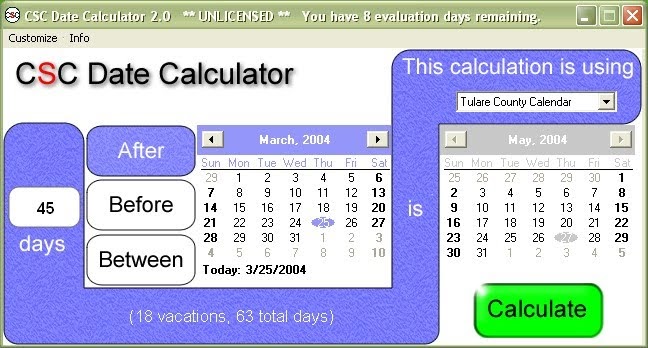 For example, if a woman has a typical cycle length of 35 days (and not 26 - 28, like most women), then most likely she will only be able to conceive on about the 21st day of the cycle (and not on the 14th, as on a 28 day cycle). Accordingly, the period calculated by menstruation will exceed the “real” obstetric gestational age by a week. nine0023
For example, if a woman has a typical cycle length of 35 days (and not 26 - 28, like most women), then most likely she will only be able to conceive on about the 21st day of the cycle (and not on the 14th, as on a 28 day cycle). Accordingly, the period calculated by menstruation will exceed the “real” obstetric gestational age by a week. nine0023
According to the date of ovulation or the date of conception
If the date of conception is known, two weeks must be added to this date - we will get the obstetric gestational age. However, it must be remembered that even if a woman knows exactly the date of ovulation or the date of sexual intercourse, after which pregnancy occurred, this does not mean that she absolutely knows the date of conception.
A spermatozoon that has entered the female body is capable of fertilization within 4-5 days, sometimes even within a week, and a mature egg retains the ability to conceive for 2 days after ovulation. Therefore, even knowing exactly the date of sexual intercourse or ovulation, it is impossible to say with accuracy that fertilization occurred on that day.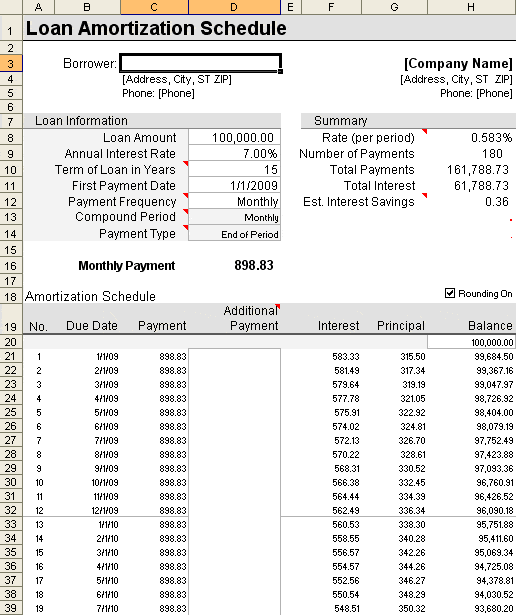 It could have happened later. Therefore, the period calculated by ovulation or the date of conception cannot be considered completely accurate. nine0023
It could have happened later. Therefore, the period calculated by ovulation or the date of conception cannot be considered completely accurate. nine0023
Doctors calculate the gestational age in a slightly different way in cases where pregnancy has occurred as a result of IVF. In this case, the fertilization of the egg by the spermatozoon is carried out "in vitro" by the embryologist. Embryos develop in the laboratory for 3-5 days, after which they are transferred to the uterus.
Doctors calculate the true duration of pregnancy after IVF from the date of ovarian puncture, that is, the stage of the procedure, when the follicular fluid and the follicles contained in it are taken with a special needle for subsequent fertilization “in vitro”, and to determine the “usual” obstetric period , add 2 weeks in the date of ovarian puncture. nine0023
If the transfer of the embryo into the uterus was preceded by its cryopreservation (that is, freezing in liquid nitrogen), to determine the exact gestational age, doctors add 5 days to the transfer date (this is the number of days the embryo develops before freezing), and to determine the obstetric period, to the received true date add 2 weeks.
According to the size of the uterus
Examining a woman in a gynecological chair, an obstetrician-gynecologist uses both hands to determine the size of the uterus. In this case, you can also determine the approximate gestational age. nine0023
This method will be most accurate in early pregnancy, up to about 12 weeks. The earliest period that can be determined by the size of the uterus is 5 weeks of pregnancy. By this time, the uterus is slightly enlarged, softened and becomes rounded. At later dates, the size of the uterus may vary slightly depending on the size of the fetus, the amount of amniotic fluid, and the structure of the woman's pelvis. For example, it is believed that at 16 weeks the bottom of the uterus is located in the middle of the distance between the pubis and the navel, at 24 weeks of pregnancy the bottom of the uterus is at the level of the navel. nine0023
Ultrasound
In the early stages of pregnancy, by measuring the size of the ovum and embryo, the gestational age can be determined with great accuracy.
At 4-5 weeks, a small “black circle” is detected in the uterus during ultrasound examination - this is a fetal egg, in which an embryo will appear a little later. At about 6-7 weeks, the embryo appears in the form of a small “stripe” and you can see its heartbeat. More accurate is the period calculated by measuring the KTP of the embryo (KTP is the coccygeal-parietal size, that is, the maximum distance from the head end of the fetus to its tailbone), and not by the diameter of the fetal egg. nine0023
After 12 weeks, the gestational age during ultrasound is determined according to the so-called fetometry, that is, measurements of various sizes of the head and abdomen of the fetus, length of arms, legs, heart sizes, etc. are used to calculate the term.
Up to 9-10 weeks of pregnancy, the embryo grows proportionally, and its size in all women with the same gestational age will be approximately identical. In the future, the size of the fetus will differ in expectant mothers of different nationalities, with different body weights, the weight of the mother and father at birth will matter, and so on. That is, in the later stages of pregnancy, normally developing children of the same term may have different sizes (fluctuations can be about 2 weeks, sometimes more), and in such a situation, it is impossible to reliably determine the gestational age according to ultrasound data. In the later stages, the determination of the gestational age by ultrasound is only clarifying. In addition, the lag in the size of the fetus during ultrasound at long gestations is most often regarded by doctors as a developmental disorder due to the fact that the placenta does not transport oxygen and nutrients well enough. nine0023
That is, in the later stages of pregnancy, normally developing children of the same term may have different sizes (fluctuations can be about 2 weeks, sometimes more), and in such a situation, it is impossible to reliably determine the gestational age according to ultrasound data. In the later stages, the determination of the gestational age by ultrasound is only clarifying. In addition, the lag in the size of the fetus during ultrasound at long gestations is most often regarded by doctors as a developmental disorder due to the fact that the placenta does not transport oxygen and nutrients well enough. nine0023
At the Fetal Medicine Center in Moscow, all types of ultrasound during pregnancy are performed at an expert level, including ultrasound in early pregnancy.
Our center is organized in such a way that the whole range of services is concentrated in one place, where a woman receives the results of various types of examinations, including ultrasound, biochemical, and specialist consultation within 1-1. 5 hours.
5 hours.
According to the level of hCG in the blood
HCG (human chorionic gonadotropin) is a hormone that is released during pregnancy by the placenta. It begins to be produced with the onset of pregnancy, gradually its amount increases, until about the 11th week of pregnancy, and then begins to decrease slightly. nine0023
Determining the concentration of hCG in the blood in the early stages of pregnancy helps to accurately determine the period. Having received the results of a blood test for hCG, it is worth paying attention that in the laboratory tables of the correspondence of the hormone level to the gestational age, the embryonic period is often indicated, that is, to determine the usual obstetric gestational age, 2 weeks should be added to the result.
Recently, tests have appeared to determine the duration of pregnancy by urine. They also determine the concentration of the hCG hormone in the urine of a pregnant woman and, in addition to confirming the very fact of pregnancy, show what period the hormone content corresponds to. The only thing to remember is that urine tests also show the fetal gestational age. nine0023
The only thing to remember is that urine tests also show the fetal gestational age. nine0023
The Fetal Medicine Center performs all types of tests for pregnant women.
Determining the term of pregnancy by the first movement of the fetus
This method of determining the term has been used less and less lately. It is based on the fact that nulliparous women begin to feel the first movements of the baby at 20 weeks of gestation, multiparous women a little earlier - at 18 weeks. That is why obstetrician-gynecologists recommend that a woman remember the date of the first movement of the fetus and enter this data into the exchange card. nine0023
However, this method of determining gestational age is often erroneous.
A mother who is expecting her first child, indeed, most often begins to feel the movements of the fetus a little later than a multiparous woman. This is due to the fact that "experienced" mothers know how the movements of the crumbs are felt at first and what they should feel. Some primigravidas perceive the first movements of the fetus as an increase in intestinal peristalsis, “gaziki”.
Some primigravidas perceive the first movements of the fetus as an increase in intestinal peristalsis, “gaziki”.
Many women describe the first fetal movements as a feeling of liquid transfusion in the abdomen, "fluttering butterflies" or "swimming fish". The first movements are usually rare, irregular. The time of the first sensations of fetal movements naturally depends on the individual sensitivity of the woman. Some future mothers feel the first movements as early as 15-16 weeks, and someone only after 20. Slender women, as a rule, begin to feel movements earlier than full ones. Women who lead an active lifestyle, work hard, usually feel the movements of the fetus later. nine0023
After determining the gestational age, the doctor can calculate the approximate date of delivery. On average, the duration of pregnancy is 280 days or 40 weeks (do not forget that obstetric term is meant).
How to correctly calculate the gestational age and determine the date of delivery
It often comes as a surprise to first-time pregnant women that in obstetrics the gestational age is determined not in months, but in weeks.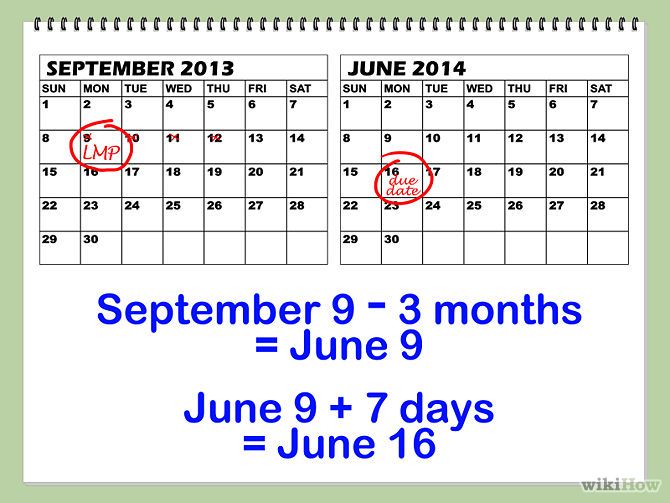 But the surprises do not end there - the fact is that the obstetric period is calculated not from conception, but from the first day of the last menstruation. nine0023
But the surprises do not end there - the fact is that the obstetric period is calculated not from conception, but from the first day of the last menstruation. nine0023
In fact, pregnancy occurs two weeks after the obstetric period, at the time of ovulation, when the sperm meets the egg. Thus, the age of the embryo, or gestational age, differs from the obstetric one by 2 weeks down.
How long does pregnancy last?
The obstetric term of a term pregnancy is 40 weeks, or 280 days. It is on the basis of the obstetric gestational age that the doctor will prescribe tests and examinations for you, determine the date of maternity leave and calculate the EDD (estimated date of birth). nine0119
Doctors use the Negele formula to calculate the EDD. According to this formula, if we add nine months and seven days to the first day of the last menstruation, we get the estimated date of delivery.
Unfortunately, determining the gestational age from the first day of the last menstrual period is not a very accurate method. It is well suited for women with a stable 28-day cycle, but if your cycle is slightly longer or shorter, then the date of ovulation shifts, respectively, and the actual obstetric gestational age will differ from the established one. nine0023
It is well suited for women with a stable 28-day cycle, but if your cycle is slightly longer or shorter, then the date of ovulation shifts, respectively, and the actual obstetric gestational age will differ from the established one. nine0023
The most accurate EDD can be calculated by adding 266 days to the date of the last ovulation (if you know it).
How to confirm pregnancy, determine the duration of pregnancy and the date of delivery
By itself, a delay in the start of a new menstrual cycle does not necessarily indicate pregnancy - failures can be explained by diseases, excessive physical exertion or stress. Pregnancy must be confirmed with an hCG test or examination on a gynecological chair. nine0119
1) Blood test for hCG
Exceeding the concentration of the "pregnancy hormone" or human chorionic gonadotropin (hCG) in a woman's blood allows diagnosing pregnancy very early, in the first days after its onset, long before a delay in menstruation appears cycle or the woman will feel the first symptoms. Also, an analysis of the level of hCG in the blood allows you to determine the gestational age with an accuracy of about two weeks.
Also, an analysis of the level of hCG in the blood allows you to determine the gestational age with an accuracy of about two weeks.
2) Home pregnancy test
Home pregnancy tests also work by measuring hCG levels, but they are less sensitive than blood tests. The most modern of them can not only confirm the presence of pregnancy a few days before the delay, but also indicate (not too accurately) an approximate date.
Tests of the old generation will show a more or less accurate result only after a delay, that is, after 2-4 weeks from conception.
3) Gynecological examination
A qualified gynecologist-obstetrician can diagnose pregnancy during an examination starting from 3-4 weeks after conception, focusing on changes in the shape and size of the uterus, as well as other signs.
4) Ultrasound
Ultrasound is the most accurate way to diagnose pregnancy. With the help of ultrasound with a transvaginal sensor, it is possible to determine the presence of a fetal egg in the uterus already 1-2 weeks after conception (3-4 obstetric weeks), but fetal heartbeats can only be detected for a period of 5-6 obstetric weeks. It is possible to determine the gestational age with high accuracy (up to 2-3 days!) With the help of ultrasound only from 6-7 weeks. nine0023
It is possible to determine the gestational age with high accuracy (up to 2-3 days!) With the help of ultrasound only from 6-7 weeks. nine0023
If the delay, as well as the result of an hCG test or blood test, indicate that you will soon become a mother, do not rush to get an ultrasound right away. Wait another 2-3 weeks, then by ultrasound you will not only be accurately determined by the period, but will also be allowed to listen to the baby's heartbeat.
If you did not do an early ultrasound to confirm pregnancy, then for the first time you will encounter this study at 10-14 weeks. At the same time, the exact gestational age and PDR will be established or corrected for you. During pregnancy, you will need to undergo such an examination at least twice more. This will happen at 20-24 and 30-34 weeks. However, it is worth saying that ultrasound in the 2nd and 3rd trimesters may have an error in determining the gestational age. The PDR established according to them may differ from the real one by 2-3 weeks.
